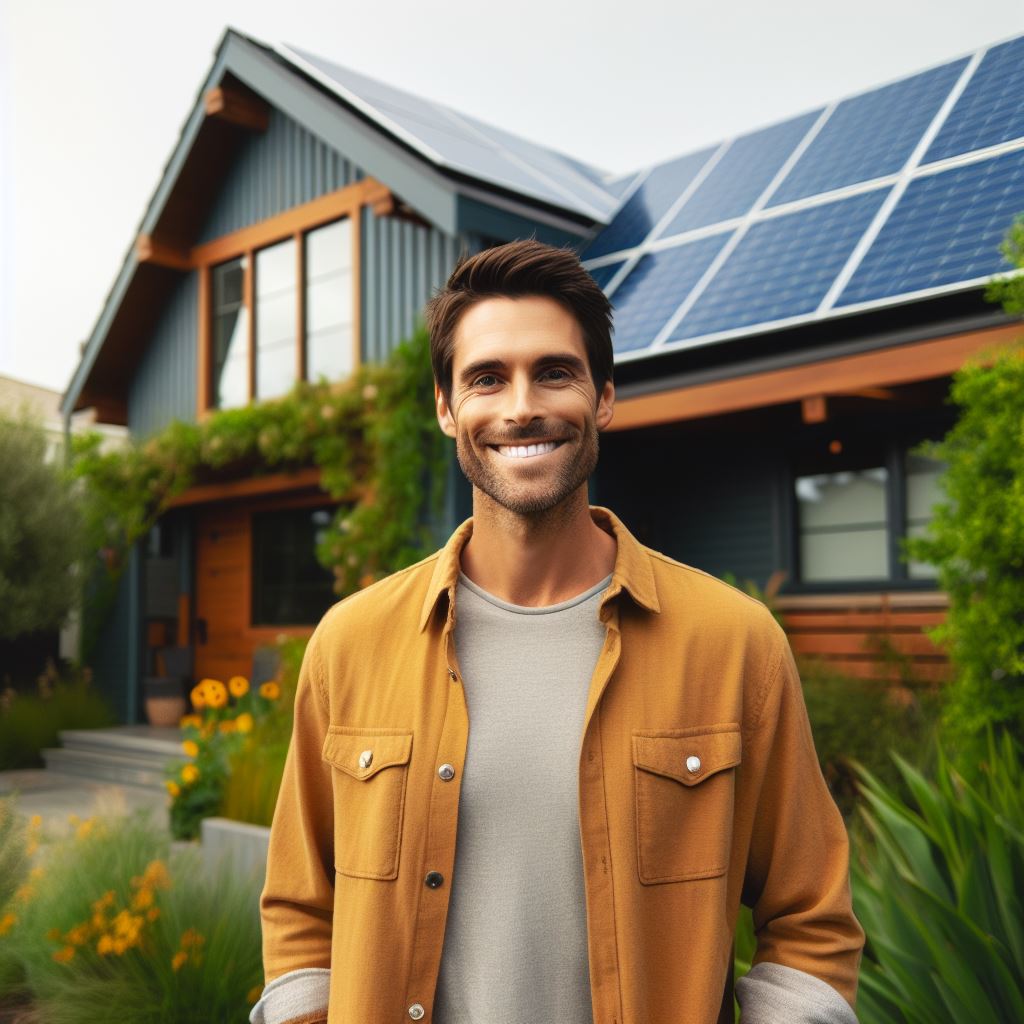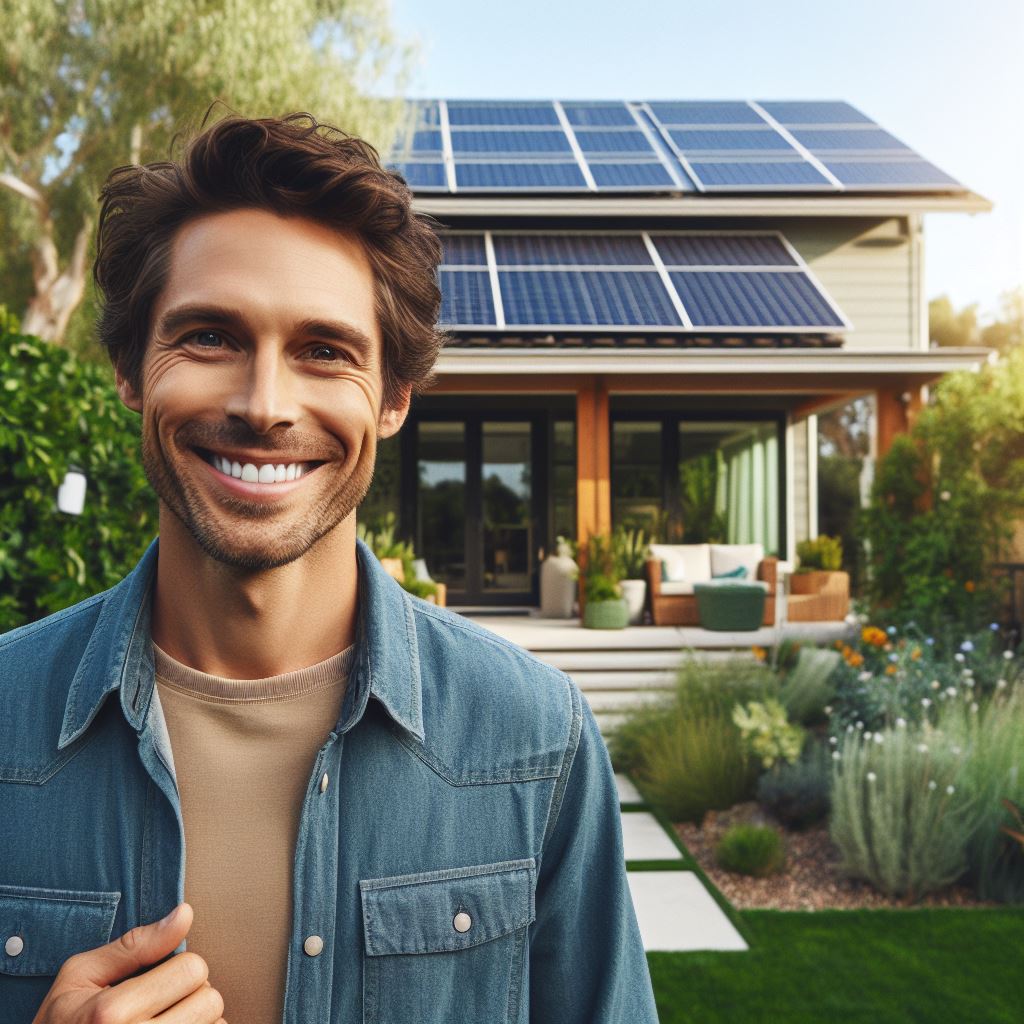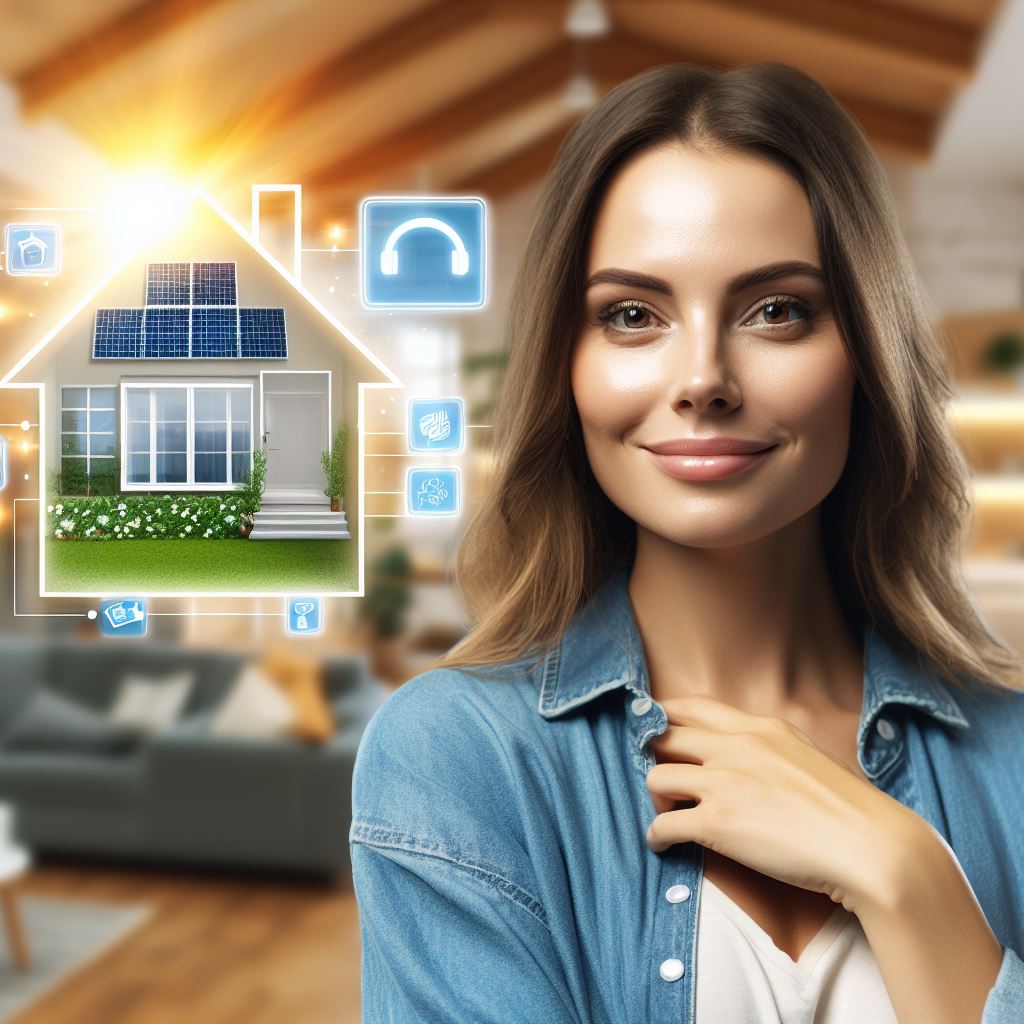Introduction
Net-zero living is a concept that aims to reduce the carbon footprint to zero.
It involves producing as much renewable energy as is consumed to achieve a balance.
This approach includes minimizing energy usage through energy-efficient measures.
Net-zero living also promotes sustainable practices like recycling, composting, and using eco-friendly materials.
The goal is to achieve a sustainable lifestyle that has minimal negative impact on the environment.
By adopting net-zero living, individuals can contribute to mitigating climate change and preserving natural resources.
Net-zero homes are designed to be energy-efficient, with features like solar panels, insulation, and efficient appliances.
These homes often consume less energy than conventional homes and generate their energy from renewable sources.
Net-zero living is not only environmentally conscious but can also save homeowners money on energy bills.
Additionally, net-zero living can inspire communities and nations to adopt sustainable practices on a larger scale.
In this blog post, we will explore the concept of net-zero living, its benefits, and how it is being implemented in the United States.
The Importance of Net-Zero Living
Net-zero living offers immense benefits not only to individuals but also to the society as a whole.
By actively engaging in practices that reduce greenhouse gas emissions and promote the conservation of natural resources, individuals can contribute towards mitigating climate change and preserving the environment for future generations.
Moreover, embracing net-zero living can bring about significant economic advantages and enhance the overall quality of life.
A. Environmental benefits
One of the primary environmental benefits of net-zero living is the reduction in greenhouse gas emissions.
Transform Your Real Estate Decisions
Unlock personalized real estate insights crafted just for you. Get actionable advice designed to amplify your success.
Get StartedGreenhouse gases, such as carbon dioxide and methane, contribute to global warming and climate change.
By adopting energy-efficient measures and utilizing renewable energy sources, net-zero homes significantly decrease their carbon footprint, thereby mitigating the adverse effects of climate change.
Additionally, net-zero living promotes the conservation of natural resources.
Water conservation techniques such as rainwater harvesting and efficient irrigation systems contribute to reducing water scarcity.
By minimizing water usage, individuals help preserve this precious resource and protect ecosystems that rely on these water sources.
Furthermore, preserving forests through sustainable practices protects biodiversity and ensures the continued provision of valuable ecosystem services.
B. Economic benefits
Apart from the environmental benefits, net-zero living brings significant economic advantages.
By investing in energy-efficient technologies, individuals can considerably reduce their energy consumption and subsequently, their energy bills.
The savings accumulated over time can be substantial, providing financial relief and improving long-term financial stability.
Furthermore, net-zero homes tend to have higher property values due to their energy-efficient features.
This not only benefits individuals when selling their homes but also attracts potential buyers who value sustainable living options.
C. Social benefits
Net-zero living also has social benefits that contribute to the overall well-being of individuals and communities.
By reducing the reliance on fossil fuels and opting for cleaner energy sources, net-zero homes improve indoor air quality.
This leads to healthier living environments, particularly important for vulnerable populations such as children and those with respiratory conditions.
Showcase Your Real Estate Business
Publish your company profile on our blog for just $200. Gain instant exposure and connect with a dedicated audience of real estate professionals and enthusiasts.
Publish Your ProfileAdditionally, embracing a sustainable lifestyle and advocating for zero carbon living encourages communities to come together, share knowledge, and support each other in adopting eco-friendly practices.
This fosters a sense of belonging, strengthens social connections, and promotes a collective commitment to a sustainable future.
In essence, net-zero living provides a multitude of benefits, including environmental, economic, and social advantages.
By actively minimizing greenhouse gas emissions, conserving natural resources, and promoting energy efficiency, individuals can actively contribute to mitigating climate change and preserving the environment.
Through financial savings, increased property values, and the creation of healthier living environments, net-zero living improves individuals’ quality of life.
Moreover, fostering sustainable communities and promoting a sustainable lifestyle enables societies to work towards a greener, more sustainable future.
Adopting net-zero living practices is not only crucial for individuals but also for the well-being of the planet and future generations.
Read: Solar Power in Real Estate Today
Policies and Initiatives Promoting Net-Zero Living in the US
A. Introduction to federal and state-level programs
Federal and state governments have implemented various programs to promote zero carbon living.
These programs aim to reduce greenhouse gas emissions and increase energy efficiency.
The federal government provides grants, incentives, and technical assistance for individuals and businesses.
State-level programs include energy efficiency standards, renewable portfolio standards, and tax incentives.
B. Net-Zero Energy Buildings (NZEB) initiatives
Net-Zero Energy Buildings (NZEB) initiatives focus on constructing buildings that generate as much energy as they consume.
These initiatives promote the use of renewable energy sources such as solar panels and geothermal systems.
NZEB initiatives also emphasize energy-efficient design and construction techniques to minimize energy consumption.
Several states have introduced building codes and regulations mandating net-zero energy standards for new constructions.
C. Incentives and grants for net-zero living
To encourage net-zero living, governments offer various financial incentives and grants.
These incentives may include tax credits, rebates, and low-interest loans for energy-efficient home improvements.
Some programs specifically target low-income households to make net-zero living more accessible and affordable.
Additionally, grants are provided to support research and development in renewable energy technologies.
D. Collaboration with the private sector
The government collaborates with the private sector to promote zero carbon living.
Public-private partnerships are formed to share resources, expertise, and funding for sustainable initiatives.
Businesses are encouraged to adopt net-zero strategies by offering tax breaks and other incentives.
The private sector plays a crucial role in driving innovation and scaling up sustainable technologies and practices.
In fact, promoting net-zero living in the US requires a comprehensive approach involving federal and state-level policies, initiatives, and collaboration with the private sector.
Governments provide financial incentives, grants, and technical assistance to encourage energy efficiency and the use of renewable energy sources.
Net-Zero Energy Buildings initiatives focus on constructing energy-efficient buildings that generate as much energy as they consume.
Collaboration with the private sector is essential in driving innovation and scaling up sustainable practices.
Together, these efforts aim to reduce greenhouse gas emissions, increase energy efficiency, and create a more sustainable future for all.
Read: Eco-Friendly Urban Living Trends
Showcase Your Real Estate Business
Publish your company profile on our blog for just $200. Gain instant exposure and connect with a dedicated audience of real estate professionals and enthusiasts.
Publish Your ProfileAdvances in Technology and Infrastructure
With the increasing focus on net-zero living, there have been significant advancements in technology and infrastructure that promote energy efficiency and sustainability.
These innovations play a vital role in achieving a net-zero lifestyle.
A. Energy-efficient appliances
One of the key components in reducing energy consumption is the use of energy-efficient appliances.
These appliances are designed to use less electricity and minimize waste.
Energy Star-certified appliances, such as refrigerators, washing machines, and air conditioners, are becoming increasingly popular.
These appliances incorporate advanced technologies and features that significantly reduce energy consumption while maintaining optimal performance.
By replacing traditional appliances with energy-efficient ones, households can save a significant amount of energy and ultimately reduce their carbon footprint.
B. Solar panels and renewable energy solutions
Another crucial aspect of achieving zero carbon living is the utilization of solar panels and other renewable energy solutions.
Solar panels harness sunlight and convert it into electricity, offering a sustainable and clean energy source for homes.
They have become more affordable and accessible, making them a popular choice for homeowners.
Additionally, there are other renewable energy solutions like wind turbines and geothermal systems.
These technologies contribute to reducing reliance on fossil fuels, further promoting a net-zero lifestyle.
Investing in renewable energy solutions not only helps in reducing energy costs but also helps in mitigating the negative impact on the environment.
C. Smart homes and automation systems
Advancements in technology have given rise to smart homes and automation systems, which have a significant impact on achieving net-zero living.
Smart home technologies enable homeowners to control and monitor their energy consumption efficiently.
They can remotely manage their heating, cooling, lighting, and other appliances, optimizing energy usage based on their needs.
Automation systems, connected to various devices and sensors, can automatically adjust settings to ensure energy efficiency.
For example, lights can automatically turn off when a room is empty, or temperatures can be adjusted based on occupancy.
These technologies not only enhance convenience but also lead to substantial energy savings.
By efficiently managing energy consumption, homeowners can move closer to achieving a net-zero lifestyle.
In short, advances in technology and infrastructure have significantly contributed to the promotion of zero carbon living.
Energy-efficient appliances, solar panels, renewable energy solutions, and smart homes all play a crucial role in reducing energy consumption and achieving sustainability.
By embracing these innovations, individuals and communities can make a positive impact on the environment and work towards a greener future.
Read: 2024’s Top Green Home Features

Challenges and Solutions
Transitioning to a net-zero living lifestyle in the United States comes with its own set of challenges.
However, there are viable solutions available for both homeowners and the wider community.
A. High upfront costs
One major challenge homeowners face when considering net-zero living is the high upfront costs associated with installing renewable energy systems and energy-efficient features.
However, there are various financing options and tax credits available that can help alleviate this financial burden.
- Financing options: Homeowners can utilize specialized financing options, such as energy-efficient mortgages or personal loans with favorable terms, to fund their net-zero living upgrades.
These options make it easier to manage the upfront costs over time. - Tax credits: Federal, state, and local governments often offer tax incentives and credits for homeowners who invest in renewable energy systems.
These credits can significantly reduce the overall cost of adoption, making net-zero living more financially accessible.
Despite the initial expense, zero carbon living also brings substantial long-term cost savings.
By generating their own renewable energy and implementing energy-efficient systems, homeowners can significantly reduce their energy bills over time.
Showcase Your Real Estate Business
Publish your company profile on our blog for just $200. Gain instant exposure and connect with a dedicated audience of real estate professionals and enthusiasts.
Publish Your ProfileThis ongoing financial benefit makes the high upfront investment worthwhile in the long run.
B. Lack of awareness and education
Another challenge that hinders the widespread adoption of net-zero living in the United States is the lack of awareness and education surrounding this lifestyle.
Many homeowners are simply unaware of the benefits and feasibility of transitioning to net-zero homes.
Addressing this issue requires a multifaceted approach.
- Importance of educating homeowners: It is crucial to educate homeowners about the environmental, financial, and health benefits of net-zero living.
Educating individuals about the long-term cost savings and positive impact on the environment can motivate them to consider adopting these sustainable practices. - Public awareness campaigns and community programs: Public awareness campaigns and community programs can play a vital role in raising awareness about net-zero living.
These initiatives can include workshops, seminars, and educational events that provide homeowners with the necessary knowledge and resources to implement sustainable practices in their homes.
By promoting zero carbon living through targeted educational efforts and community-based programs, more homeowners can become aware of its advantages and feel empowered to make the necessary changes.
Increased awareness will not only drive individual action but also create a ripple effect, encouraging others in the community to adopt net-zero living practices as well.
Read: Sustainable Homes: Cost vs. Value
Real Life Examples of Net-Zero Living in the US
Net-zero living is not just a theoretical concept; it has been successfully implemented in various parts of the United States.
These real-life examples demonstrate the feasibility and benefits of living in a net-zero environment, both at an individual and community level.
A. Net-zero energy homes
1. Case studies showcasing successful implementation
One notable example of a net-zero energy home is the “Home of the Future” in Bethesda, Maryland.
This single-family home produces as much energy as it consumes, thanks to a combination of solar panels, energy-efficient appliances, and smart home technologies.
The homeowners have not only reduced their carbon footprint but also enjoy significantly lower utility bills.
2. Key features and technologies used
Net-zero energy homes typically incorporate several key features and technologies to achieve their energy independence.
These include high levels of insulation, energy-efficient windows, LED lighting, geothermal or solar heating and cooling systems, and smart home automation.
Combining these elements allows homeowners to generate their own clean energy and reduce their reliance on the grid.
B. Net-zero energy communities
1. Examples of sustainable developments
The Village at Gafney Farm in Vermont is a prime example of a net-zero energy community.
This neighborhood consists of energy-efficient homes that produce more renewable energy than they consume.
Through the use of solar panels, geothermal heat pumps, and advanced energy monitoring systems, residents are able to live comfortably while minimizing their environmental impact.
The Grow Community on Bainbridge Island, Washington, is another successful net-zero energy community.
It features a mix of energy-efficient single-family homes and multi-family buildings, all designed to maximize energy efficiency and utilize sustainable materials.
The community also encourages sustainable living through shared amenities like community gardens and electric vehicle charging stations.
2. Benefits for residents and the environment
Living in net-zero energy communities comes with numerous benefits.
Residents not only enjoy lower utility bills but also experience improved indoor air quality and comfort due to the high-insulation standards.
Additionally, these communities contribute to reducing greenhouse gas emissions and promoting a more sustainable future.
They serve as models for future developments, showcasing the possibility of achieving both environmental and economic sustainability.
In a nutshell, net-zero living is not just a theoretical concept – it is a reality in the United States.
The success of net-zero energy homes and communities proves that it is possible to reduce our carbon footprint while enjoying the benefits of energy independence and lower utility bills.
These real-life examples serve as inspiration for individuals and communities looking to embrace a more sustainable way of living.
Conclusion
Net-zero living is crucial for mitigating climate change and reducing energy consumption.
It offers numerous benefits, including lower utility bills, improved air quality, and job creation within the renewable energy sector.
Showcase Your Real Estate Business
Publish your company profile on our blog for just $200. Gain instant exposure and connect with a dedicated audience of real estate professionals and enthusiasts.
Publish Your ProfileIt is essential for individuals to adopt zero carbon living practices, such as installing solar panels and using energy-efficient appliances.
Policymakers must incentivize sustainable building practices and develop regulations that promote net-zero homes.
The future of net-zero living in the US looks promising.
With advancements in technology and increasing awareness of environmental issues, more people are embracing this concept.
However, it will require collective efforts from individuals, policymakers, and businesses to make net-zero living mainstream across the country.
By embracing net-zero living, we can reduce our carbon footprint and contribute to a sustainable future for generations to come.
Let us strive towards a society where every home produces as much energy as it consumes, creating a greener and healthier planet.
Together, we can pave the way for a net-zero future and inspire positive change in our communities, our nation, and ultimately, the world. The time to act is now.
Let us not only dream of net-zero living but actively pursue it, making it a reality for all.




